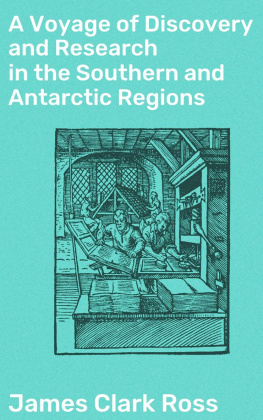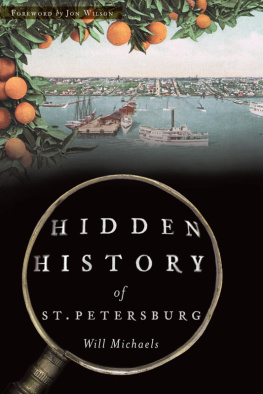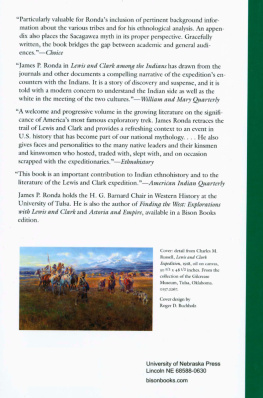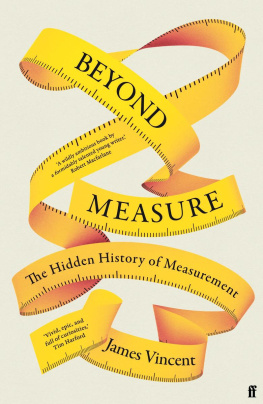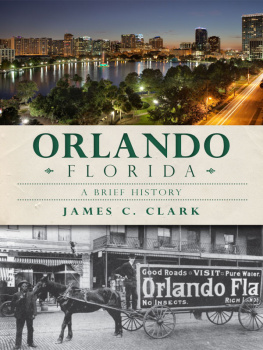ACKNOWLEDGEMENTS
This is my third book for The History Press and surely the most fun. I love telling stories about little-known aspects of Florida history. This volume contains hundreds of obscure facts and tales of people who played a role in making Florida what it is today. Florida has a remarkable story. It was considered unworthy of statehood by some because it was believed no one would ever live there, and today it is the third-largest state.
I am grateful to my commissioning editor, Alyssa Pierce, who has shown remarkable patience in working with me for the second time.
My colleagues in the History Department at the University of Central Florida have been, as always, supportive and free with advice. I am fortunate that the University of Central Florida has become a major center for the study of Florida history and a national leader in the study of public history.
In working on his own book, Craig Pittman of the Tampa Bay Times has provided me with insight and inspiration. Adam Watson and the staff of the Florida State Archives have helped me for more than a decade, providing the photographs that appear in this book and nearly a dozen others.
And finally, this book would not have been possible without Laureen Crowley, an old-school editor who once again has rescued me from many errors.
CREATING FLORIDA
I magine Florida as part of the northwest coast of Africa, with Jacksonville in Morocco and Miami in the Western Sahara. That was what the world looked like 300 million years ago when almost every land mass formed a giant supercontinent called Pangaea. South America was along most of the west coast of Africa, and North America was beside Europe and North Africa. The Gulf of Mexico had the same shape it has today. The lower halfnow South America and Africawas called Gondwana. The northern half was named Laurentian. The lands had crashed into one another during the late Paleozoic and early Mesozoic periods.
From examining the rocks far beneath the surface, it is possible to paint a picture of the creation of Florida. During the late Mesozoic period, perhaps 200 million years ago, the continent of Pangaea began to break apart. Florida was stuck between South America, Africa and North America. As North America pulled away from Africa, a small portion of the Africa plate remained attached to North America. That plate was the basis for the formation of Florida.
As North America came to rest in its present location, Florida was under water, with nothing separating the Gulf of Mexico and the Atlantic Ocean. But the water covering Florida was not deep. Marine creatures died and drifted to the Florida plate, forming limestone.
At the end of the Mesozoic period, a giant meteor struck the Yucatan Peninsula. Scientists believe it killed the dinosaurs. During the Cenozoic eraperhaps fifty million years agoFlorida began to take shape. About twenty-five million years ago, the water recededduring the Lake Oligocene epochand reefs formed off the coast. It was also during this period that the Gulf Stream began to form. Finally, at the end of the Oligocene epoch, the sea levels dropped, and Florida emerged, growing wider until it was nearly twice as large as it is today.
We know this because we find the first vertebrates, including horses and bats, buried in the peninsula. It was also during this period that underground cavities formed, which would become sinkholes and a major problem for Florida thousands of years later. The underground springs and caves were also created.
During the Miocene epochabout twenty million years agothe Appalachian Mountains were formed, and in Florida, phosphate developed. During this period, horses, saber-toothed tigers, huge sloths, lions weighing up to eight hundred pounds and giant beavers that were six feet in height roamed Florida. Off the coast, sharks as long as fifty feet swam in the warm waters. Their teeth were as long as six inches.
During the Pleistocene epoch, also known as the ice age, sea levels varied widely from three hundred feet lower than today to one hundred feet higher than today. By the Holocene epochabout ten thousand years agothe shape of present-day Florida had been formed, the Keys became islands and people began to move in.
The people came late, long after they arrived in the rest of North America and much of South America. It may have been because of a combination of factors: mosquitoes swarmed, tigers and other mammals roamed and the land was not good for agriculture.
After his 1527 trip, lvar Nez Cabeza de Vaca wrote one of the first descriptions of the early Floridians. He wrote that they were wonderfully well built, spare, very strong and very swift. De Vaca said that they were tall and look like giants from a distance.
The idea of the giants stuck. Some early people report seeing men eight feet tall. There were reports of finding skeletons that tallalthough, like much about Florida, the stories were wildly exaggerated.
The Native Americans first came to North American nearly thirty thousand years ago, crossing the Bering Strait from Asia to present-day Alaska. They came to Florida perhaps ten thousand years ago, settling around Warm Mineral Springs, near present-day Sarasota. They lived in small huts and hunted animals.
As the climate warmed, more Indians moved to Florida. The Indians began to build villages and improved food gathering. During the Formative eraabout the time of the birth of Christthe Indians began farming and making pottery. From the archaeological sites, we know that they were trading with tribes outside of Florida for a wide range of goods, including copper, iron ore and seeds. The Florida Indians used pearls and shells to trade.
By about AD 1000the Mississippian erathere were distinct tribes in Florida. They carried spears and traveled by canoe. The major tribes included the Timucua in Northwest Florida, the Apalachee in the panhandle, the Tocobaga near Tampa Bay, the Calusa in southwest Florida and the Tequesta in southeast Florida.
The Timucuan villages contained small huts surrounded by walls of tall tree trunks. The Calusa may have come from the islands, and they centered their empire near Fort Myers. They were expert sailors, and it is believed they sailed to Cuba and, perhaps, to Mexico.
There also were smaller tribes, including the Ais and Jeaga on the East Coast.





